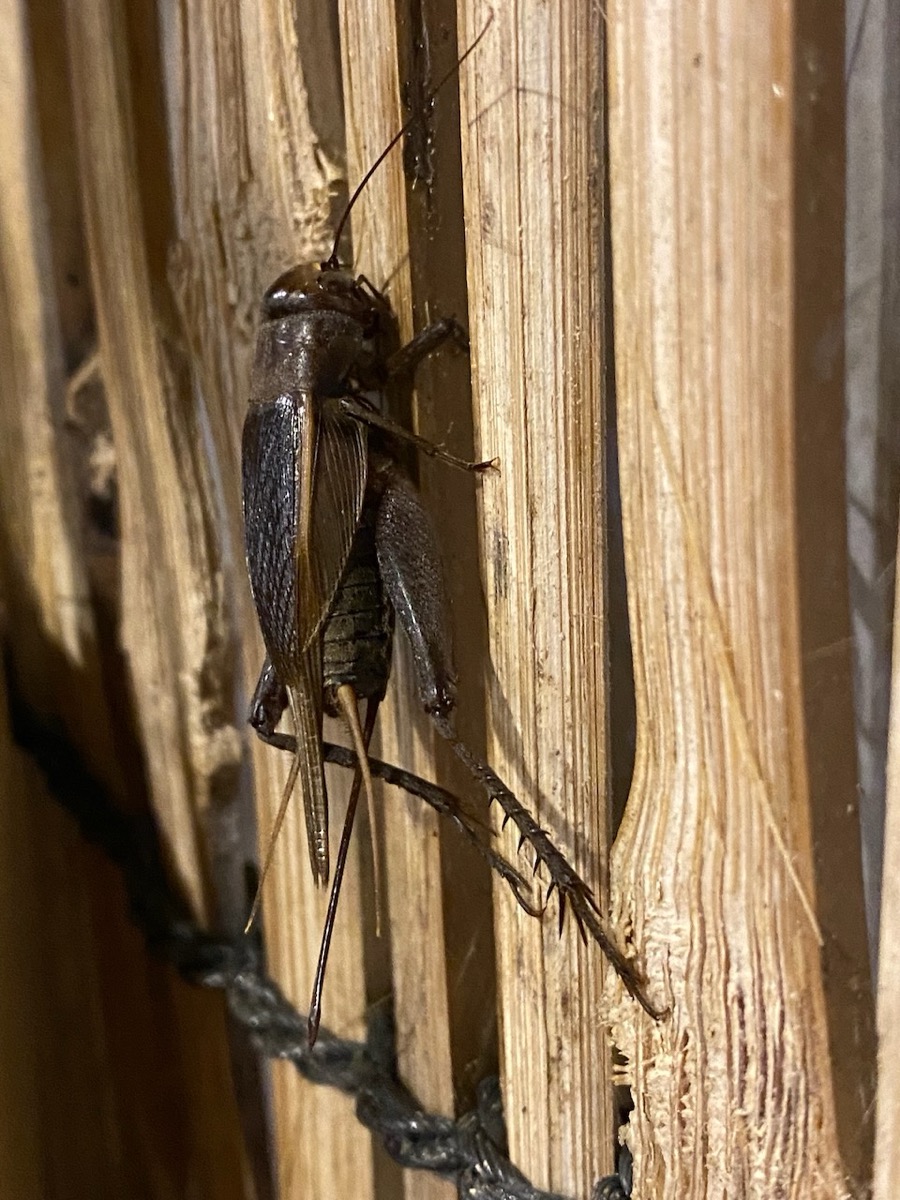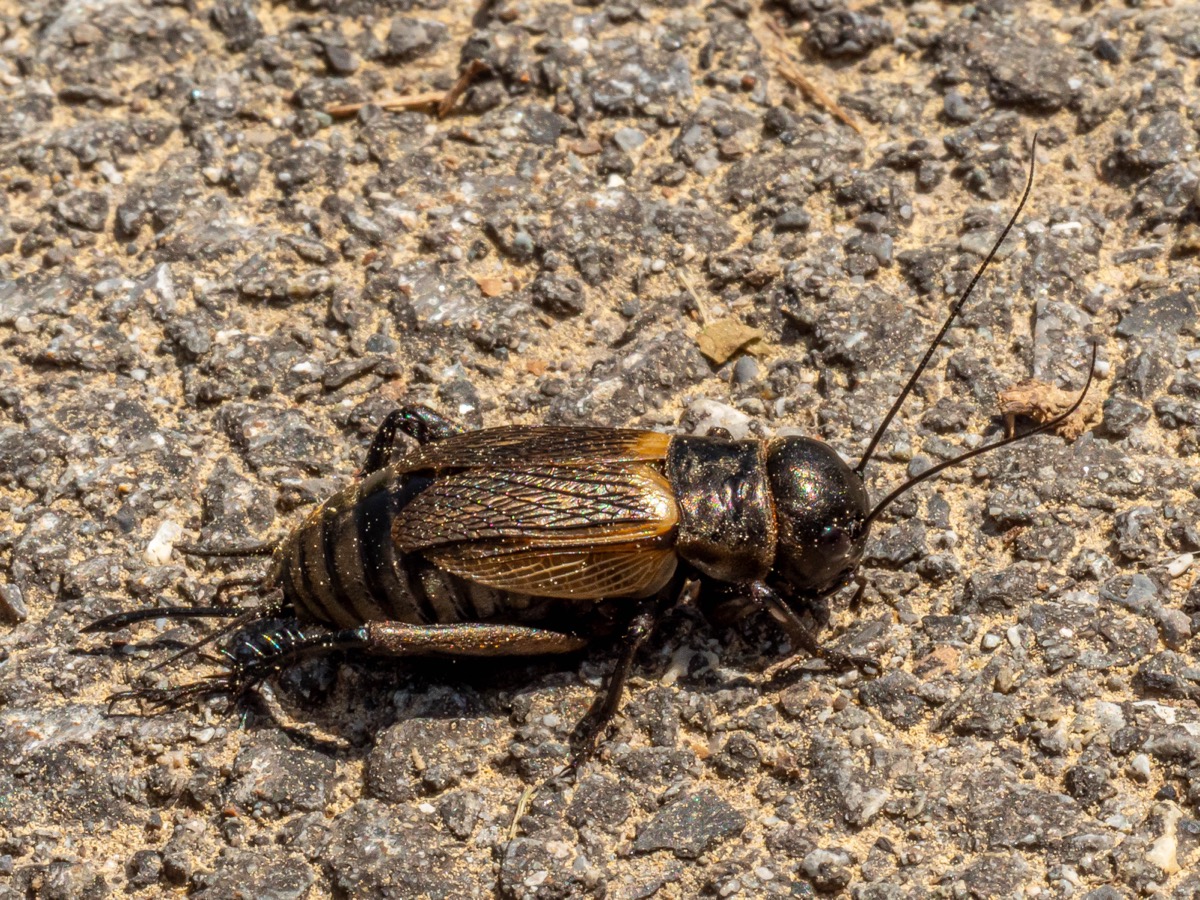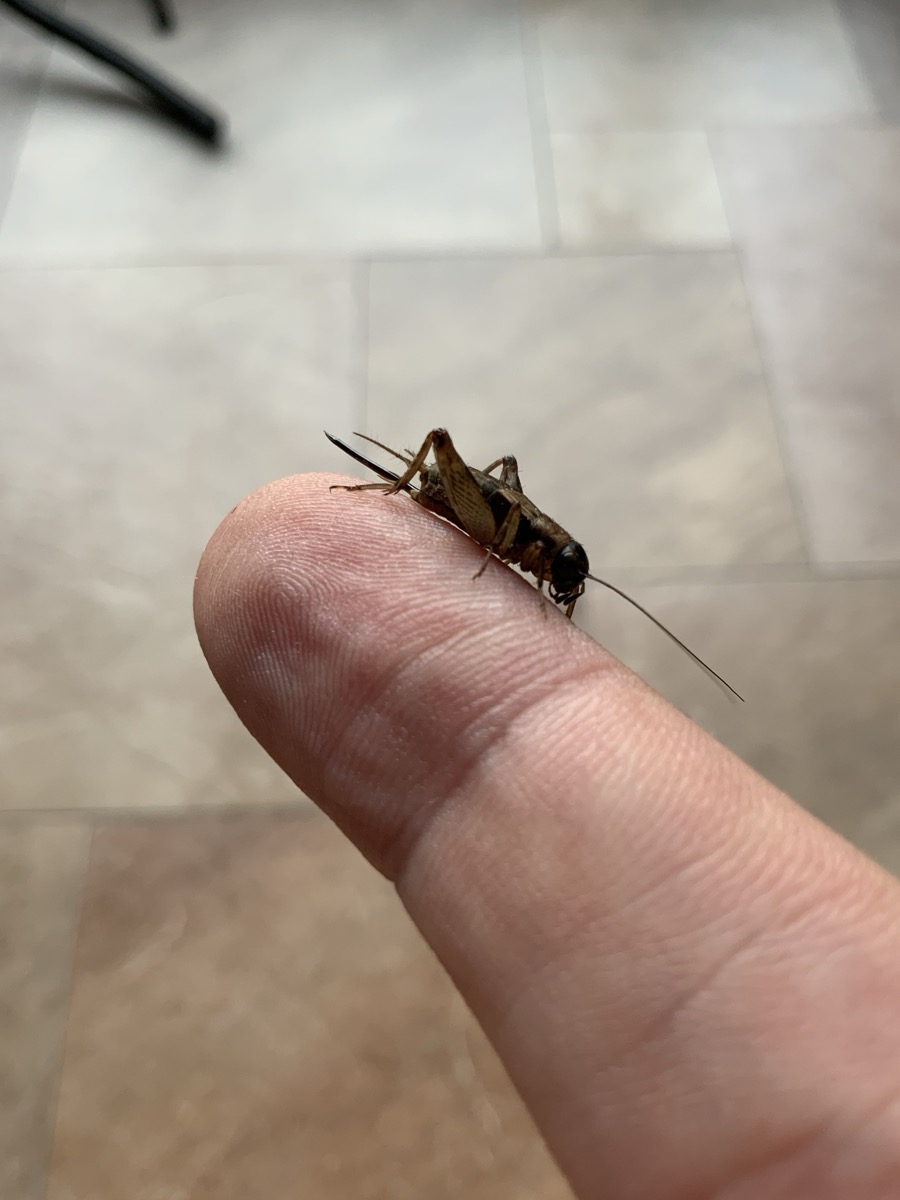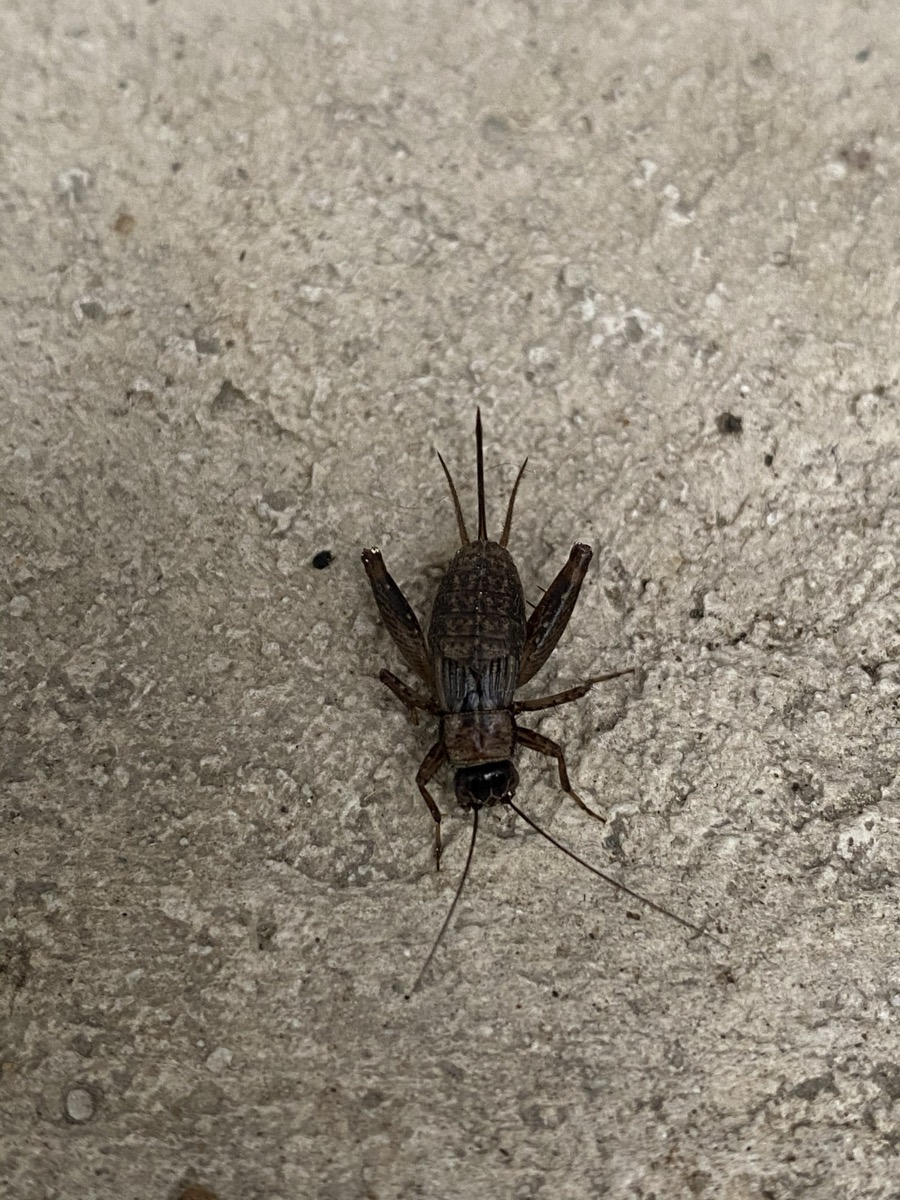Characteristics
- Medium size (typically 15 to 25 mm)
- Stout, dark body (black, brown), sometimes glossy
- Hardened wings in males, smaller or absent in females
- Long and thin antennae, often longer than the body
- Powerful hind legs for jumping
- Clearly visible ovipositor in females (straight or slightly curved)
Habitat
Gryllidae are found in:
- Dry grasslands, fallows, natural meadows
- Burrows in loose or sandy soil
- Path edges, clearings, dunes
- Urban or peri-urban areas (house cricket)
Biology
- Nocturnal or crepuscular
- Male song produced by rubbing the elytra (stridulation)
- The song varies by purpose: calling, rivalry, mating
- Females are attracted by the male’s song
- Eggs laid in soil, hemimetabolous development
- Nymphs resemble adults but lack wings
Common genera
- Gryllus – Field cricket (Gryllus campestris): black, lives in burrows, sings in spring
- Acheta – House cricket (Acheta domesticus): paler, sometimes introduced to wild
- Nemobius, Eneoptera – Smaller or forest crickets
Particularities
- The song is species-specific and plays a key role in reproduction
- Species are sensitive to habitat management (late mowing, minimal disturbance)
- Crickets are good indicators of dry grassland naturalness
- Some species are used as reptile food or bred in captivity
To be defined
possibly Teleogryllus derelictus
Photographed in Siem Reap, Cambodia
Genus Gryllus
Gryllus campestris
| Order | Orthoptera |
| Family Orthoptera | Gryllidae |
| Genus | Gryllus |
| Species | campestris |
| Common name | Field cricket |
| Identifier | Linnaeus |
| Year of identification | 1758 |
| IUCN category (2001-2003) | LC (Least Concern) |
| Color | dark brown |
| Male min size | 18 |
| Male max size | 26 |
| Female min size | 19 |
| Female max size | 27 |
| Period start | May |
| Period end | July |
| Range | Europe |
Genus Nemobius
Nemobius sylvestris
| Order | Orthoptera |
| Family Orthoptera | Gryllidae |
| Genus | Nemobius |
| Species | sylvestris |
| Common name | Wood cricket |
| Identifier | Bosc d’Antic |
| Year of identification | 1792 |
| IUCN category (2001-2003) | LC (Least Concern) |
| Color | brownish |
| Male min size | 7 |
| Male max size | 10 |
| Female min size | 7 |
| Female max size | 10 |
| Period start | |
| Period end | |
| Range | Europe, North Africa |



